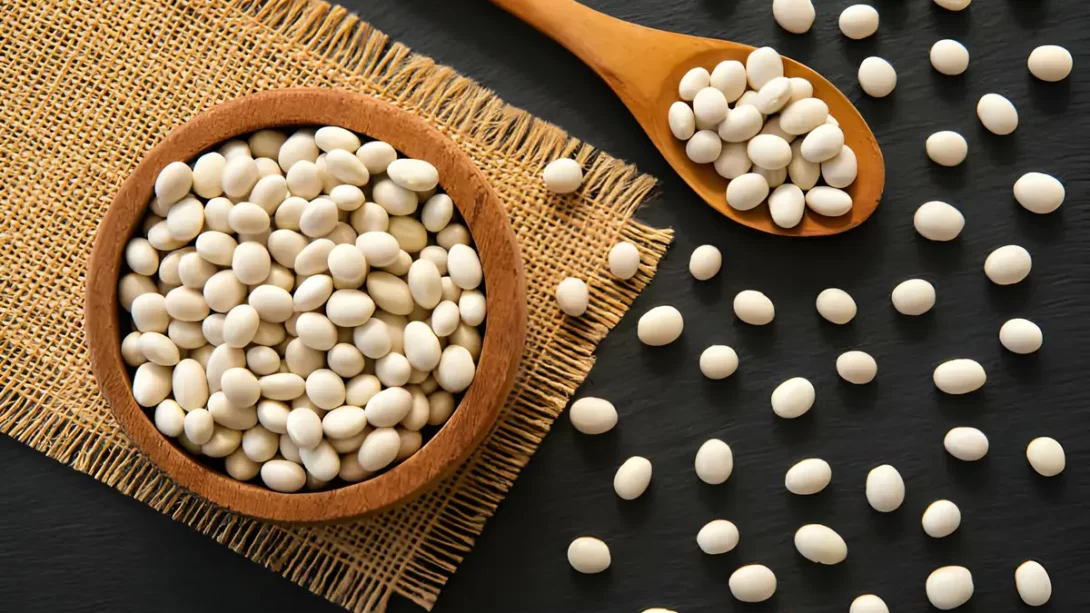As pet owners increasingly look for ways to diversify their dogs’ diets with healthy and nutritious foods, questions about various human foods arise. Among these, Great Northern beans, known for their mild flavor and nutritional benefits, have gained attention. This article delves into whether these beans are a safe and beneficial addition to a dog’s diet.
Great Northern Beans
Great Northern beans are a type of white bean, similar to navy beans and cannellini beans, but larger in size. They are a staple in many kitchens due to their versatility and nutrient-rich profile, containing protein, fiber, and essential vitamins and minerals. These beans are low in fat and have a low glycemic index, making them a potentially healthy choice for dogs. When comparing Great Northern beans to other beans, they stand out for their milder flavor and firmer texture, which can be more palatable for some dogs.
Nutritional Benefits of Great Northern Beans for Dogs
Great Northern beans offer several health benefits for dogs. Their high protein content supports muscle development and maintenance, making them a great supplement to a dog’s diet, especially for active or working breeds. The fiber in these beans can aid in digestion and promote a healthy gut, while the low fat content makes them a suitable option for dogs on a weight management plan. Additionally, the beans are a source of essential nutrients like magnesium, potassium, and iron, which contribute to overall health and well-being. However, it’s important to remember that while these beans are nutritious, they should complement a balanced diet tailored to a dog’s specific needs.
Preparing Great Northern Beans for Dogs
Proper preparation of Great Northern beans is crucial for making them safe and digestible for dogs. Raw beans are not suitable for dogs as they contain lectins, which can be harmful. The beans should be thoroughly cooked without any added salt, spices, or seasonings, which can be detrimental to a dog’s health. Soaking the beans overnight before cooking can aid in making them more digestible. Once cooked, the beans should be plain and soft, making them easier for dogs to eat and less likely to cause gastrointestinal upset.
Portion Size and Frequency
When introducing Great Northern beans into a dog’s diet, moderation is key. Beans should only make up a small percentage of the dog’s total daily food intake. A good guideline is to start with a small amount, such as a tablespoon for smaller dogs or a quarter cup for larger breeds, and observe how they react. These beans should be offered as an occasional treat or dietary supplement, not a staple food. Overfeeding beans can lead to digestive issues like bloating and gas. Regularly incorporating a small amount of Great Northern beans into the diet can provide health benefits without causing digestive distress.
Potential Risks and Considerations
While Great Northern beans can be a healthy addition to a dog’s diet, there are potential risks to be aware of. Some dogs may be allergic to beans or have a sensitivity that causes gastrointestinal discomfort, such as gas, bloating, or diarrhea. Introducing beans gradually and monitoring the dog’s reaction is important to ensure they are well-tolerated. Additionally, dogs with specific health conditions, such as kidney issues, should have a diet tailored to their needs, and beans may not be suitable. Always consult with a veterinarian before making significant changes to a dog’s diet, especially if the dog has underlying health issues.
Alternatives to Great Northern Beans
For dog owners looking for alternatives to Great Northern Beans, there are several other dog-friendly legumes and beans that can be safely included in a dog’s diet. Black beans, kidney beans, and pinto beans, for instance, also offer high protein and fiber content. However, like Great Northern Beans, they should be thoroughly cooked and served plain. Chickpeas and lentils are other nutritious options, known for their digestibility and nutrient richness. Each of these alternatives provides a unique set of vitamins and minerals, allowing for variety in a dog’s diet. It’s important to introduce any new food gradually and in moderation, observing the dog’s response to ensure it’s a suitable addition to their diet.
Conclusion
Great Northern Beans can be a healthy and nutritious treat for dogs when prepared and served correctly. They provide essential nutrients like protein, fiber, and vitamins that can complement a dog’s balanced diet. However, portion control and proper preparation are key to ensuring these beans are a safe and enjoyable addition. Dog owners should always consider their pet’s individual dietary needs and health conditions and consult with a veterinarian for personalized dietary advice. By doing so, they can safely incorporate
a variety of nutritious foods like Great Northern Beans into their dog’s diet, contributing to their overall health and well-being. Remember, while these beans offer nutritional benefits, they should not replace a dog’s regular, balanced diet but rather serve as a supplement or occasional treat. With careful consideration and proper dietary management, dogs can enjoy the health benefits of Great Northern Beans as part of a diverse and nutritious diet.




